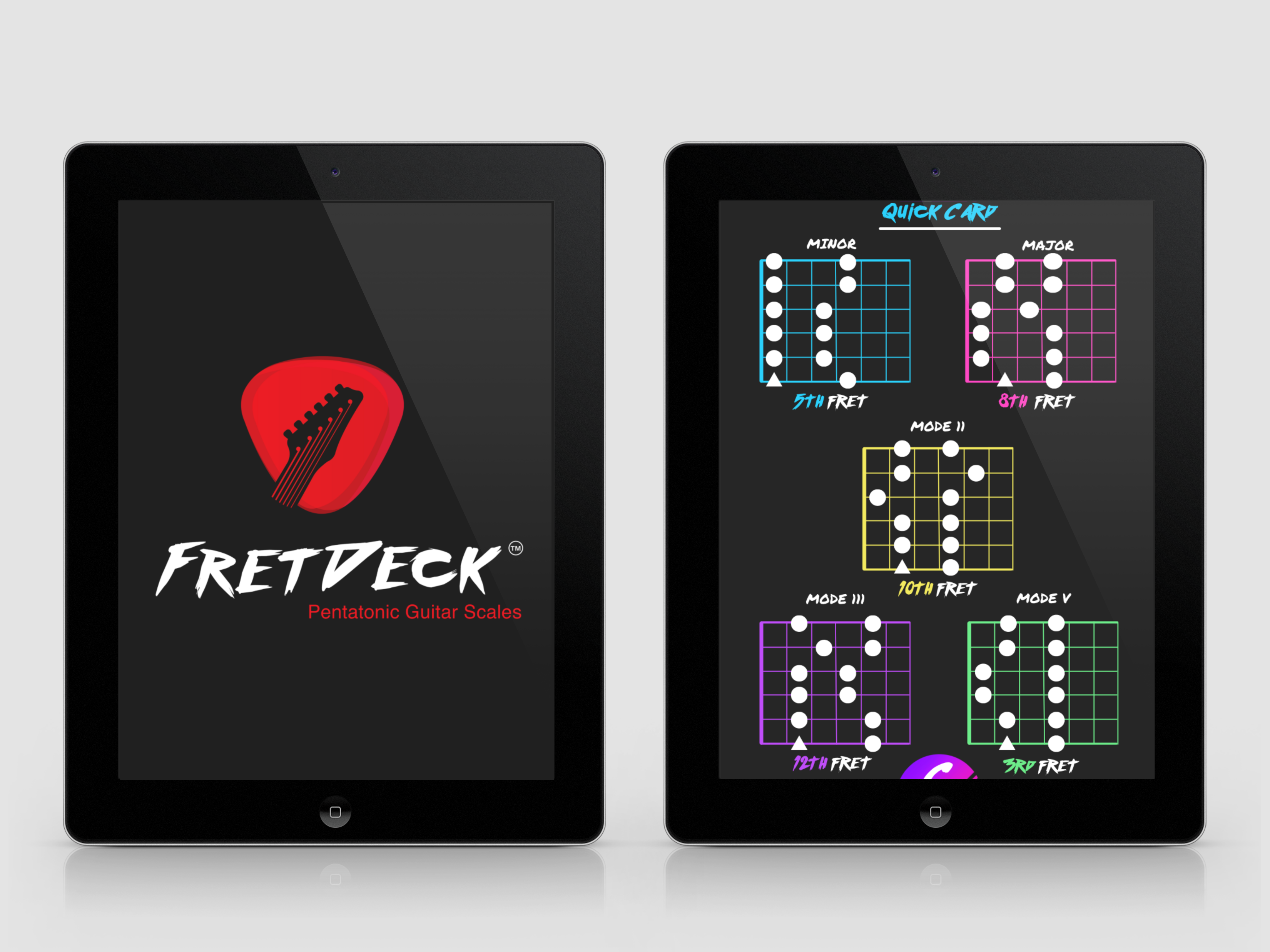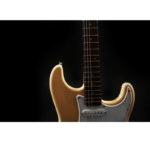As a guitarist, one of the most exciting skills you can develop is the ability to craft solos. Whether you’re playing in a blues band, rocking out on stage, or simply jamming with friends, a great solo can captivate an audience and showcase your creativity. In this article, we’ll explore how to solo on guitar using various scales, including major scales, pentatonic scales, and more, while discussing techniques that help shape a memorable guitar solo.
The Foundations of Soloing: Understanding Scales
To build a great solo, you must first understand the building blocks—scales. Scales are a series of notes arranged in a specific order of pitches that provide the framework for your soloing. Let’s explore three essential types of scales that form the core of guitar solos: major scales, pentatonic scales, and modal scales.

Download The FretDeck & Pentatonic Secrets Course!
Download Our Course
1. The Major Scale: The Backbone of Melodic Soloing
The major scale is one of the most fundamental scales used in music. It’s made up of seven notes and follows a specific pattern of whole steps and half steps (W-W-H-W-W-W-H). This pattern gives the scale a bright and happy sound, making it ideal for solos in pop, rock, and jazz genres.
For example, the C major scale is:
C – D – E – F – G – A – B – C
To solo using the major scale, start by playing the notes in the scale over a chord progression in the same key. Practice ascending and descending through the scale to become familiar with the patterns on the fretboard.
Tip: When soloing with the major scale, pay attention to the chord tones of the underlying progression. Chord tones (the notes that make up each chord) will help you create melodies that resonate with the harmony, giving your solo a more musical feel.
2. The Pentatonic Scale: The Most Popular Soloing Tool
The pentatonic scale is a five-note scale that has been a go-to for guitarists for decades. There are two types of pentatonic scales: major pentatonic and minor pentatonic. Both are versatile and can be used across various genres, from blues to rock and beyond.
- The major pentatonic scale is essentially the major scale with the 4th and 7th notes removed. It’s perfect for adding a sweet, melodic touch to your solos.
- The minor pentatonic scale is derived from the natural minor scale by omitting the 2nd and 6th notes. It’s often associated with blues and rock due to its expressive, soulful sound.
For example, the A minor pentatonic scale is:
A – C – D – E – G – A
You can use the minor pentatonic scale to solo over minor and blues chord progressions. Since the pentatonic scale is made up of fewer notes, it’s easier to use for improvisation and provides fewer chances of hitting “wrong” notes.
Tip: The pentatonic scale is ideal for bending and vibrato techniques. When crafting a solo, incorporate expressive bends and slides to give your playing more emotion.
3. Modal Scales: Adding Flavor to Your Solos
Modes are scales derived from the major scale but with a different starting point. Each mode has its unique sound and feel, which can drastically change the mood of your solo. Some of the most common modes used in guitar solos are:
- Dorian mode: A minor scale with a raised 6th, giving it a jazzy or funky sound.
- Phrygian mode: A minor scale with a flattened 2nd, often used in metal and flamenco.
- Mixolydian mode: A major scale with a flattened 7th, popular in blues and rock.
For example, the D Dorian mode is:
D – E – F – G – A – B – C – D
To use modes in your solos, practice playing them over different chord progressions. Each mode works best in specific harmonic contexts. The Dorian mode, for example, fits well over minor chords, while the Mixolydian mode works beautifully over dominant 7th chords.
Crafting a Solo on Guitar
Now that we’ve covered some essential scales, let’s discuss how to craft a solo on guitar. Creating a great solo requires more than just running up and down scales; it’s about expressing your musical ideas in a structured way. Truefire has a wonderful series on soloing called Trading Solos, Check it out to help with practicing your solos. Here’s a step-by-step approach to crafting a memorable solo.
1. Start with a Simple Motif or Phrase
Every great solo begins with a simple idea or motif. A motif is a short, memorable phrase that you can develop throughout your solo. Start by creating a small melody using a few notes from your chosen scale, then repeat and vary that idea to create a sense of continuity.
For example, if you’re soloing in A minor pentatonic, you might start with a phrase like:
A – C – D – C – A
Once you have your motif, you can change the rhythm, add slides or bends, and move it up or down the fretboard to give it variety.
2. Develop Your Solo Dynamically
A great solo has a natural flow that keeps the listener engaged. One way to achieve this is by building dynamics into your solo. Start with simple, slower phrases, and gradually increase the complexity and intensity as your solo progresses. This gives your solo a sense of narrative and makes it feel more like a musical journey.
For example, begin by playing a few notes from the pentatonic scale with longer durations, then as you reach the middle of the solo, speed up the phrasing, introduce faster runs, or move higher up the neck to add intensity.
Tip: Don’t overplay. Sometimes less is more. Space is important in a solo—leaving pauses or “breaths” between phrases can make the notes you do play more impactful.
3. Incorporate Techniques: Bending, Vibrato, and Sliding
Soloing isn’t just about the notes you play—it’s also about how you play them. Guitar techniques like bending, vibrato, and sliding can give your solo personality and emotion.
- Bending: Push or pull the string to raise the pitch of the note. This is a staple in blues and rock solos.
- Vibrato: Add a slight, rapid variation in pitch by quickly moving the fretting finger back and forth. Vibrato adds a singing quality to your notes.
- Sliding: Shift your finger smoothly from one note to another on the fretboard. This technique can create a fluid, connected feel in your solo.
Incorporating these techniques into your solo adds texture and expression, helping your playing stand out.
4. Mix Major and Minor Pentatonic Scales
A trick used by many legendary guitarists is to combine major and minor pentatonic scales in the same solo. This blending of scales creates tension and release, which adds interest to your playing.
For example, if you’re playing in the key of A, you can switch between the A major pentatonic scale and the A minor pentatonic scale to create a contrasting sound. This technique works especially well in blues and rock music.
5. Pay Attention to the Chord Progression
Your solo should complement the chords being played in the background. As you solo, focus on hitting the chord tones (the root, 3rd, 5th, and 7th of the chord) when the chord changes. This helps your solo sound more connected to the harmony and makes the notes feel more intentional.
For example, if the chord progression is Am – D – G, when you reach the D chord, try to land on one of the notes in the D chord (D, F#, A). This will make your solo sound smoother and more musical.
6. End with a Resolution
Just like a great story has a satisfying ending, so should your solo. Aim to resolve your solo by landing on the root note of the key or a chord tone of the final chord in the progression. This gives your solo a sense of closure and leaves the listener with a feeling of resolution.
Conclusion
Learning to solo on guitar is a rewarding process that allows you to express your creativity and emotions through music. By understanding how to use major scales, pentatonic scales, and modal scales, you can develop solos that are both melodic and dynamic. Remember to craft your solos with intent—start with a simple idea, build it with dynamics, and use techniques like bending and vibrato to give it life. With practice and experimentation, you’ll be able to create solos that resonate with listeners and showcase your unique voice as a guitarist.
Now it’s time to grab your guitar and start crafting your next solo masterpiece!

Download The FretDeck & Pentatonic Secrets Course!
Download Our Course










